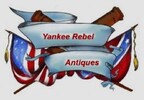 Loading... Please wait...
Loading... Please wait...-
Call us on (973) 810-2976
- My Account
- Gift Certificates
- Items / $0.00
All prices are in All prices are in USD
Categories
- Home
- Artillery related items
- RARE - French and Indian War Artillery Bar Shot, recovered many years ago from the St. Lawrence River, NY
- Home
- Identified Artifacts
- RARE - French and Indian War Artillery Bar Shot, recovered many years ago from the St. Lawrence River, NY
- Home
- Excavated Artifacts
- RARE - French and Indian War Artillery Bar Shot, recovered many years ago from the St. Lawrence River, NY
- Home
- REDUCED PRICE ITEMS
- RARE - French and Indian War Artillery Bar Shot, recovered many years ago from the St. Lawrence River, NY
- Home
- Late 18th Century / Early 19th Century
- RARE - French and Indian War Artillery Bar Shot, recovered many years ago from the St. Lawrence River, NY
- Home
- Revolutionary War items
- RARE - French and Indian War Artillery Bar Shot, recovered many years ago from the St. Lawrence River, NY
- Home
- REVOLUTIONARY WAR ARTILLERY
- RARE - French and Indian War Artillery Bar Shot, recovered many years ago from the St. Lawrence River, NY
RARE - French and Indian War Artillery Bar Shot, recovered many years ago from the St. Lawrence River, NY
Product Description
This is another unique piece coming out of a 60-year collection of French & Indian War/Revolutionary War artillery. Being offered is a French and Indian War 9-pounder section of Bar Shot. It measures 8 ¼” overall with a diameter of 4” and weighs 8 pounds, 2 ounces. This unique piece was recovered in the early 20th century in the St. Lawrence River.
Bar Shot could vary somewhat in the shape of the ends or the contour of the connecting rod. This style uses a substantial square bar that slightly flares out at the ends. Whatever the particular form, the intent was the same: to introduce some instability in flight, particularly after it first hitting something, which would cause the projectile to cut a wide path, particularly desirable when firing at the complex and vital rigging of sailing ships.
The Battle of the Thousand Islands was an engagement fought on 16–24 August 1760, in the upper St. Lawrence River, among the Thousand Islands, along the present day Canada–United States border, by British and French forces during the closing phases of the French and Indian War.
The engagement took place at Fort Lévis, about one mile downstream from the modern Ogdensburg–Prescott International Bridge, Pointe au Baril (present-day Maitland, Ontario), and the surrounding waters and islands during the Montreal Campaign. The small French garrison at Fort Lévis held the much larger British army at bay for over a week, managing to sink two British warships and to cripple a third. Their resistance delayed the British advance to Montreal from the west.
Actually, this bar shot may have been fired at one of those sunken British warships, it did break, so it had to hit something. The piece remains in good condition, however at one time it appears there was some surface chipping, and sections were painted black to stabilize it – now it is a solid piece. In the “Collector’s Illustrated Encyclopedia of the American Revolution”, by Neumann and Kravic, there are examples and one just like this (see pictures).
This collection began in the late 1950s and was created by private acquisitions, closed museums, diggers, and lake divers. The collector meticulously displayed and cataloged every piece along with its provenance. His markings were crude at the time, but now have proved to be important. Many of the pieces went through electrolysis to remove crusted rust.
This is the first time this bar shot has been on the open market, and it is truly a great piece of early American History. It definitely merits a place in an advanced collection or museum. As with all the pieces in this esteemed collection, a Certificate of Authenticity will be included. A friendly layaway is also available for this item.



